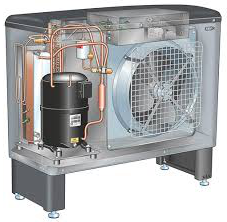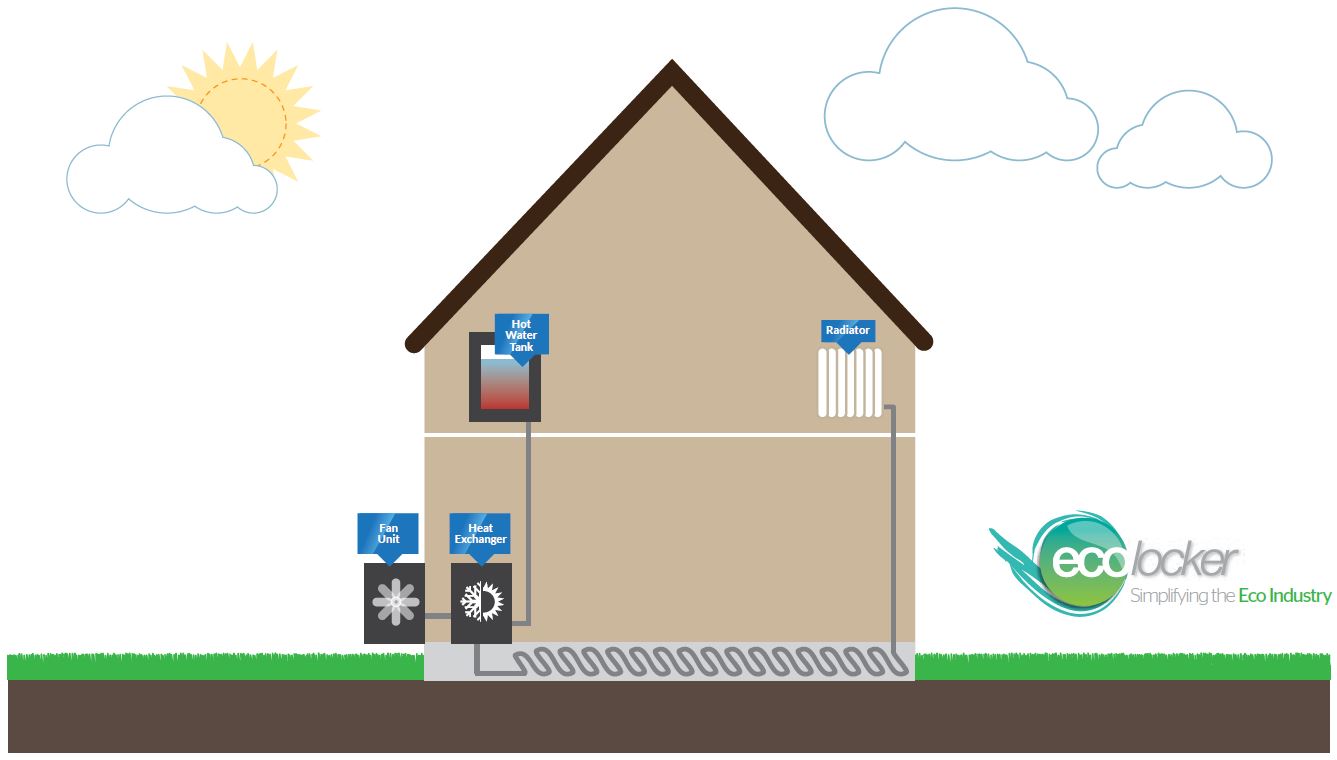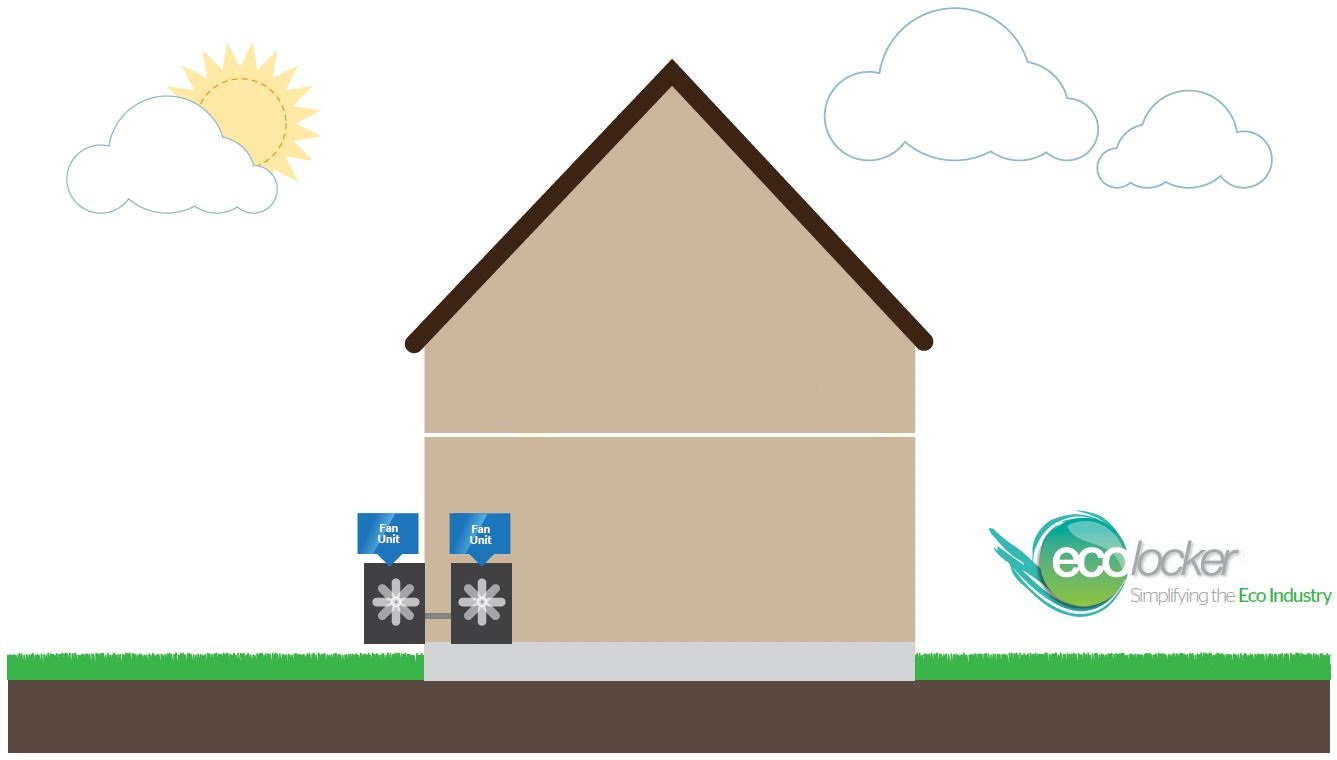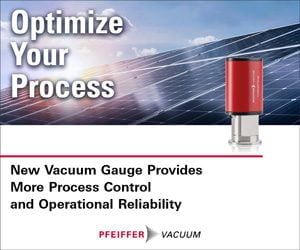What are Air Source Heat Pumps?
You may be surprised to hear that, as long as the temperature is above -18°C (0°F), enough heat can be drawn out of the surrounding air to heat your house. Air Source Heat Pumps basically take the air from the outside and convert it into heat that can be used to provide warmth for radiators or hot water tanks.

How do Air Source Heat Pumps Work?
An Air Source Heat Pump (ASHP) normally fits to the outside of the house, either at the side or the back, and sucks in the air, using a mechanism to compress and increase its temperature. This can then be sent to under floor heating or radiators and used to store hot water in a cylinder that can be utilised for showers, baths and the daily wash.
Unlike Ground Source Heat Pumps, air ones don’t require a large amount of construction works and most domestic units can be fitted quite easily. When the air enters the pump, it is absorbed at a low temperature in a fluid which is then compressed. This increases the temperature which is subsequently passed into the heating systems of the house.
There are two main types of Air Source Heat Pump:
Air to water systems: These send the heat to the water based units of your house such as the hot water tank or radiators. As with Ground Source Heat Pumps, these work better with things like under floor heating rather than traditional radiators because heat is produced at a lower temperature than normal gas central heating, for example.
Air to air system: This produces a flow of warm air that can be used to heat rooms and is circulated by fans. It is more limited than air to water and is not used to produce hot water or heating for radiators.
The Benefits of an Air Source Heat Pump
- It could well lower your existing energy bills, for example if you are replacing conventional heating.
- You might benefit from the Government’s new Renewable Heat Incentive (RHI) scheme that means you could get money back on every kW of energy you produce.
- Depending on the fuel that you will be replacing when having an Air Source Heat Pump installed, you will have a good chance of reducing your carbon footprint.
- Maintenance of the system is relatively low and can be used to heat your entire home.
- It’s often seen as a cheaper and easier option than Ground Source Heat Pumps.
Electricity from the mains is still used to drive the pump but this should be more cost effective than using it directly for heating. Air Source Heat Pumps provide heating at a much lower temperature so may have to be kept on for a longer period to be fully effective.
Deciding if an Air Source Heat Pump is Right for You
There are a number of issues you need to decide on before you opt to go for an Air Source Heat Pump.
- The first and most important thing you need to consider is whether there is room on the side of your house to fit one. While the pump itself is not overly bulky, it will require a decent amount of space around it to draw in the air. A sun facing wall with plenty of space is ideal.
- As with other renewable energies, it’s wise to ensure that your house is fully insulated and is as energy efficient as it can be. Because they use low temperatures over an extended period, if you have poor insulation, the danger is that you will lose all that heat before it has a chance to build.
- As a future investment, an Air Source Heat Pump will give you a greater return if you are replacing either coal, gas or electric heating.
- Unlike traditional heating, Air Source Heat Pumps work better with options such as under floor heating rather than normal radiators because of the lower water temperatures used.
Costs and ROI for Air Source Heat Pumps
A typical ASHP system will cost around £7-14,000 depending on the size of your property and your needs. This will also affect the running and maintenance costs over time. The overall savings are difficult to assess and will depend on a number of factors:
- The heating system you are replacing and its cost and efficiency. Obviously an older less, efficient system will give you better savings.
- The system you are using to distribute the heat – for example, under floor heating will present you with more savings than normal radiators.
- An air to water system will provide less savings than a simple air to air one because of the greater energy needed to run it.
You may be able to take advantage of the Government’s Renewable Heat Incentive and get some money back on every kW you produce.
Choosing Your Air Source Heat Pump
Whether you choose an air to air or air to water heat pump will depend on your need – for instance air to air can provide both heating and cooling, whilst water ones are designed specifically for heating both your water and your property.
Getting Your ASHP Installed
You normally don’t need to have planning permission to have an Air Source Heat Pump installed but it is always worth checking with your local council. To benefit from offers such as the Renewable Heat Incentive, your installer will need to be accredited with the Microgeneration Certification Scheme.
Air to Water Heat Pump Illustration |
Air to Air Heat Pump Illustration |
 |
 |







